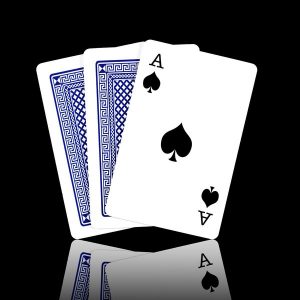Stud Strategy – Playing Three Card Flush Starting Hands

Continuing our series on Seven Card Stud strategy, we will take a look at starting hands involving three flushes. A flush is a strong hand in Stud and starting with three flush cards can lead to dreams of big pots.
However, not all flush draws or flush starter hands are created equal and we will take a look at the best flush starters to play.
Straight Flush Starters
Three cards to a straight flush are easily the best flush starter hand that you could hope for, especially if it is open-ended. Hand such as 5-6-7, 8-9-10, or even 10-J-Q suited as all among the best. Gap flush starters along with double gap hands such as 5-6-8 or 5-7-9 suited are also solid starters.
The extra value in these hands come in the fact you have flush and straight outs. If you start with 5-6-7 of spades, you can pick up a spade or any 3, 4, 8, or 9 to improve your hand. With 22 cards to improve your hand by Fifth Street, you’ll want to play these hands.
Uncoordinated Flush Starters
After your straight flush starters, uncoordinated flush starters are also relatively solid hands to start with. Hand such as 2-6-10, 4-8-Q, and 3-9-A suited as reasonable flush starter hands. When playing uncoordinated flush starters, you definitely want to improve the hand by Fifth Street in order to continue playing.
Improvement for these hands is restricted to picking up a four-flush or a big pair such as queens, kings, or aces. Starting with 2-4-8 suited and only improving to eights by fifth is usually a losing proposition to continue.
Flush Draws With An Ace are Best
Whenever you get a flush starter with an ace, you’re looking to take off a card or two. The exception would be a hand like A-4-6 with multiple bets ahead. To a single completion, you’ll play just about every ace flush starter.
With an ace, you have a draw to the nut flush and improving to aces by fifth give you a good chance to improve to aces-up or better by the river. Again, you want to improve by fifth in order to continue playing.
Pay Attention to Upcards
The upcards of your opponents will give you vital information regarding your outs. For flush starters, you are looking for opponents holding your suit or your largest cards. For example, if you start with K-10-6 of spade and see two kings and two spades, you are looking to fold here.
When looking to continue a flush starter, you don’t want to see any more than two of you suit on board. If you have three hearts and three opponents have hearts, your odds of improving to a flush plummet.
Using the Roy Cooke rule for playing straight draws, all suited cards count a point. Cards of equal rank count as a half-point here. If you see more than 2 and a half points on board, it is time to fold.
When to Avoid Low Flush Starters
Generally, you are going to look to take off a card with low flush cards to see if you improve to a flush draw. However, there are times you are going to skip this line of thinking. If you start with a hand like 2-4-7 suited and see a lot of action ahead of you, pick a better spot.
In this type of scenario, you are likely against more than one pair higher than your seven. Improving to sevens-up is not likely to win this hand. Your only way to improve is a flush and right now it looks to be on the lower end. The long term profitability of this play is not worth the extra bets.
Next week, we will conclude our discussion of starting hands by looking over the best possible starting hand for Seven Card Stud – rolled-up trips.
